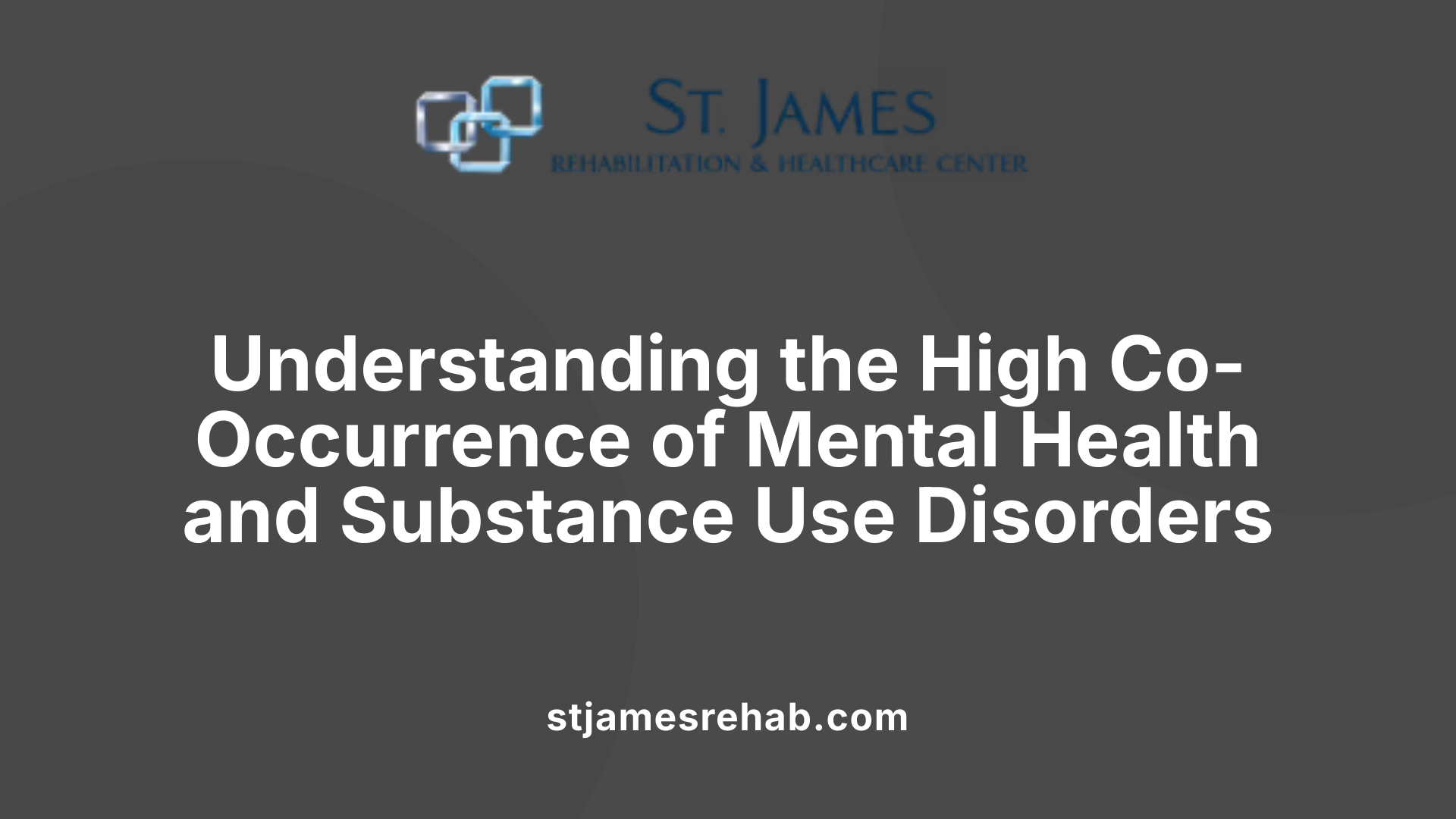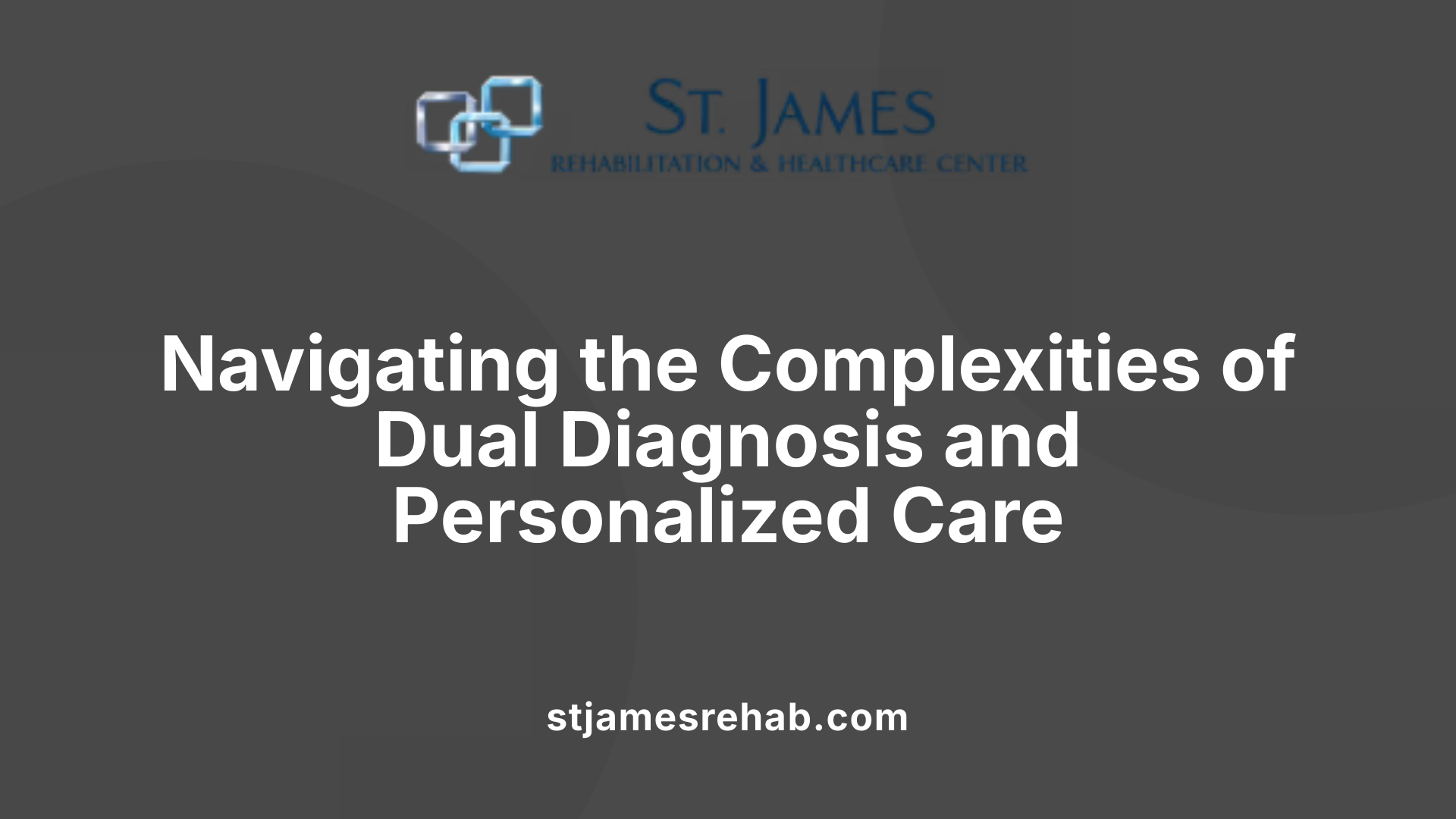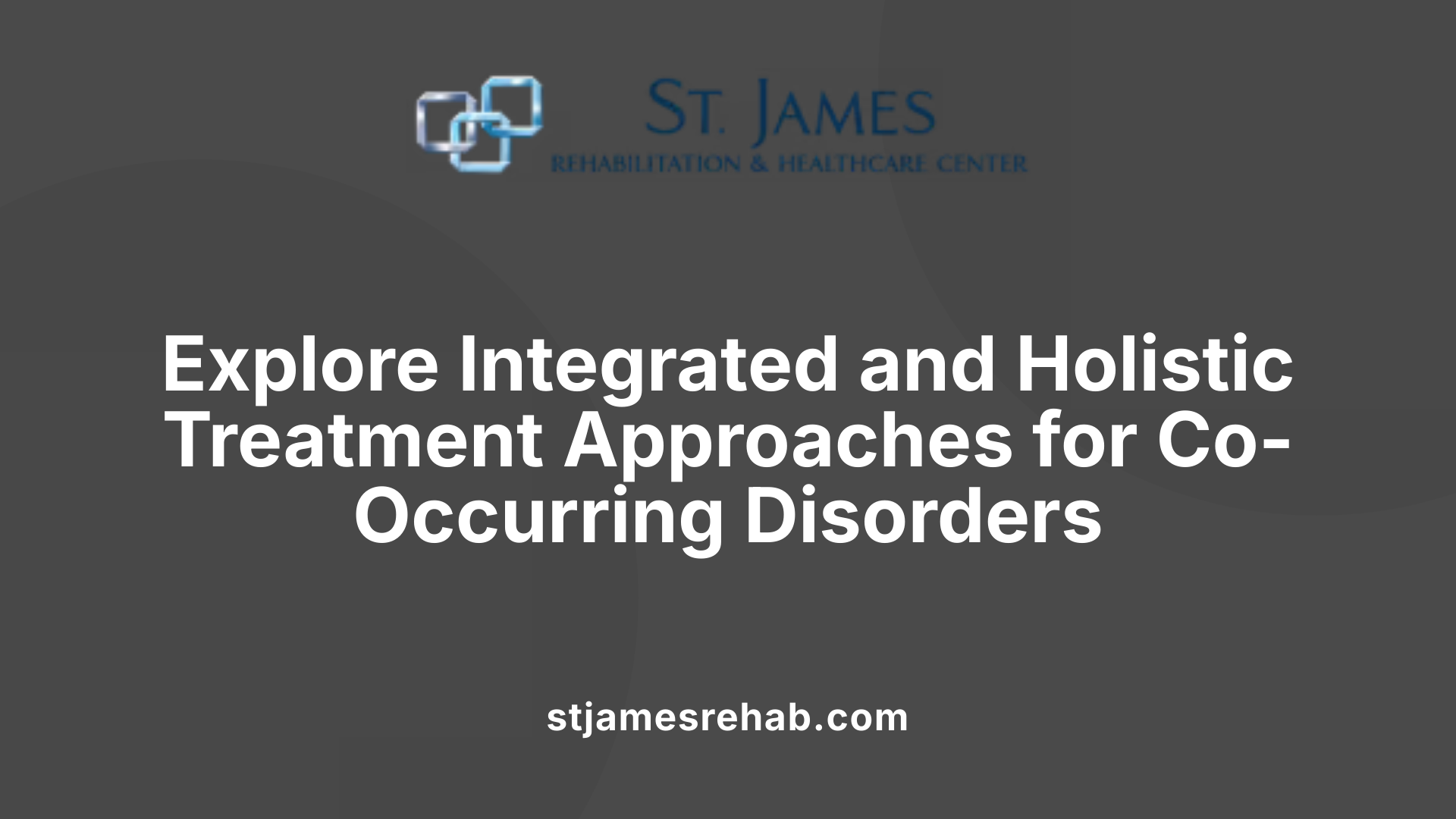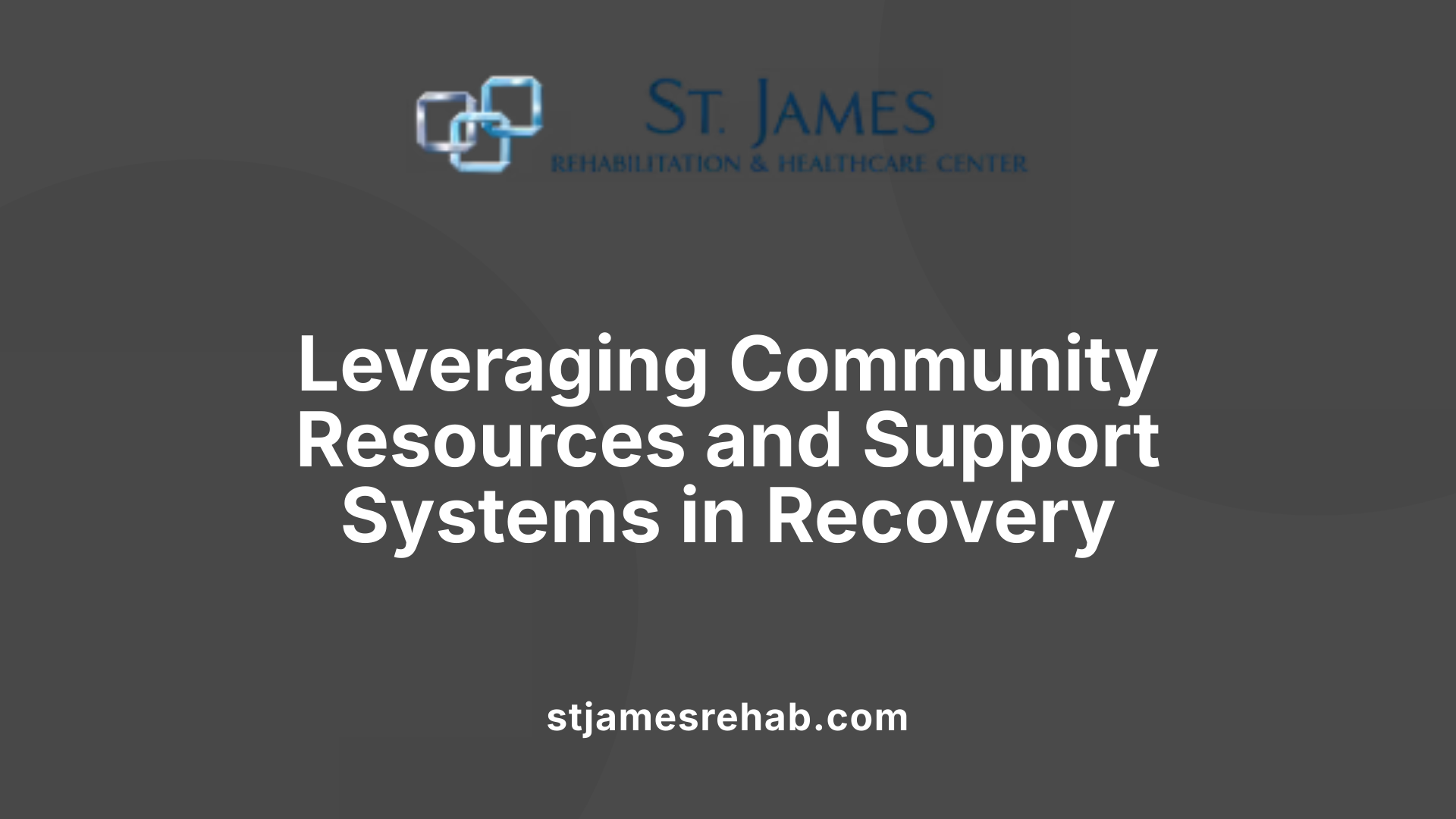The Connection Between Mental Health and Addiction Recovery
Understanding the Interwoven Paths of Mental Health and Addiction Recovery

Exploring the Complex Relationship Between Mental Well-being and Substance Use
The intricate connection between mental health and addiction recovery highlights the importance of recognizing co-occurring disorders, understanding their causes, symptoms, and the integrated treatment strategies necessary for effective recovery. As statistics reveal that nearly half of individuals with substance use disorders also experience mental health issues, a comprehensive approach is essential to address both conditions simultaneously. This article delves into the factors contributing to co-occurrence, signs to watch for, and the holistic treatment options available to support sustained recovery.
Prevalence and Interrelation of Mental Health and Substance Use Disorders

What are the statistics on co-occurring disorders?
Recent data highlights how common it is for mental health issues and substance use disorders to occur together. In 2021, approximately 19.4 million adults with substance use disorder also had a mental illness. Among adults suffering from a serious mental illness, about 6.4 million also struggled with substance use. These figures demonstrate that nearly half of all individuals with substance use disorders have an underlying or concurrent mental health issue.
Statistical studies, including reports from the Journal of the American Medical Association, show that roughly 50% of individuals with severe mental disorders are affected by substance abuse. Specific mental illnesses like depression, anxiety, bipolar disorder, and schizophrenia frequently co-occur with addiction. For example, about 37% of alcohol abusers and 53% of drug abusers also have a serious mental health condition.
Moreover, a 2022 survey indicates over 44% of adults with substance use disorder also experienced a mental health disorder, emphasizing the widespread overlap. The exact numbers vary by demographic factors and severity, but the consistent theme is that these disorders often coexist, complicating treatment and recovery.
| Population Group | Percentage with Co-occurring Disorders | Notes |
|---|---|---|
| Adults with SUD | 50% | Based on recent surveys |
| Adults with Mental Illness | 38% | Affected by substance use |
| Teenagers in SUD treatment | Over 60% | Have mental health issues |
| Adults with Serious Mental Illness | Over 25% | Also with SUD |
This high prevalence underscores how intertwined mental health and substance use issues are, highlighting the necessity for integrated treatment approaches.
What shared risk factors contribute to both mental health and addiction issues?
Multiple causes and contributing factors link mental health conditions and addiction. These include genetic predispositions, such as family history, and environmental influences like childhood trauma, neglect, or abuse. Adverse childhood experiences are particularly impactful, increasing vulnerability by affecting brain development and emotional regulation.
Other common risk factors encompass psychosocial stressors, such as unemployment, relationship problems, and social isolation. Trauma, especially during formative years, can alter brain function, making individuals more sensitive to stress and less able to cope healthily, leading to maladaptive behaviors such as substance use.
Biological vulnerabilities, like differences in brain chemistry, also play a role. Some individuals have inherent genetic susceptibilities that increase their likelihood of developing both mental health issues and substance dependence.
Research suggests that these shared risk factors often create a cycle: mental health problems may lead to substance use as a form of self-medication, while substance abuse can induce brain changes that worsen mental health symptoms.
How can mental health conditions lead to substance use, and vice versa?
Mental health problems such as anxiety, depression, PTSD, and bipolar disorder frequently drive individuals toward substance use to relieve distress or manage symptoms temporarily. This behavior, known as self-medication, can provide short-term relief but often worsens the condition over time.
Conversely, substance abuse can cause significant changes in brain chemistry, affecting neurotransmitters involved in mood regulation, decision-making, and impulse control. These changes can induce or exacerbate mental health symptoms, creating a vicious cycle.
For example, heavy cannabis use has been linked to an increased risk of schizophrenia, while opioid abuse is associated with higher rates of depression. Substance-induced brain changes may also impair emotional regulation, leading to Anxiety, mood swings, or psychosis.
The bidirectional relationship makes it essential to treat both conditions concurrently, as ignoring one often results in relapse or worsening of the other. Integrated care models emphasize simultaneous treatment to break this cycle, promoting long-term recovery and improved mental well-being.
Understanding Dual Diagnosis and Its Challenges

What is dual diagnosis, and what challenges does it present?
Dual diagnosis, also known as co-occurring disorder, refers to a situation where an individual experiences both a mental health disorder and a substance use disorder at the same time. This overlap creates a complex treatment landscape because the symptoms of each condition can influence and exacerbate the other. Diagnosing and treating these intertwined issues can be difficult; symptoms may overlap, making it hard to identify the primary disorder. For example, substance use might mask underlying mental health issues like depression or anxiety, or mental health symptoms may develop as a result of substance abuse.
One of the significant challenges in managing dual diagnosis is the heightened risk of relapse. Since each disorder can worsen the other, untreated mental health issues can lead to increased substance use, and vice versa. Moreover, the potential for adverse medication interactions adds an additional layer of complexity, requiring careful planning and monitoring. Despite these hurdles, an integrated, multidisciplinary approach that combines therapies, medications, and ongoing support can lead to stabilization and an improved quality of life.
What are the treatment challenges associated with dual diagnosis?
Treating individuals with dual diagnosis involves multiple obstacles. Accurate diagnosis is often difficult because of the overlapping symptoms of mental health and substance use disorders. Misdiagnosis or underdiagnosis can occur if clinicians do not evaluate both conditions thoroughly.
Medication management presents another challenge. Some psychotropic medications used for mental health conditions might interact negatively with treatments for addiction, such as methadone or buprenorphine for opioid dependence. This necessitates careful selection and ongoing adjustment of treatment plan components.
Behavioral and emotional complexities also complicate treatment. Individuals might resist certain therapies due to distrust, denial, or comorbid behavioral issues like aggression or impulsivity. The chronic, relapsing nature of these disorders means that continuous, adaptive treatment strategies are necessary.
To overcome these challenges, comprehensive care involving a multidisciplinary team — including psychiatrists, addiction specialists, psychologists, social workers, and family members — is essential. Personalizing the approach based on the individual's specific needs enhances the likelihood of successful recovery.
How can personalized treatment plans improve outcomes for dual diagnosis patients?
Creating tailored treatment plans for dual diagnosis patients is crucial because each person’s combination of mental health symptoms and addiction issues is unique. Personalization involves thorough assessment of the individual’s specific conditions, environmental influences, strengths, and barriers to recovery.
Custom treatment strategies might include a mix of behavioral therapies such as Cognitive Behavioral Therapy (CBT), Dialectical Behavior Therapy (DBT), and motivational interviewing, alongside carefully chosen medications that address both mental health and addiction. Family involvement and social support networks are also integrated into personalized plans to bolster ongoing recovery.
Personalized care reduces the chances of adverse drug interactions and increases patient engagement by addressing personal triggers and concerns directly. When treatment is tailored, patients are more likely to adhere to therapy, which significantly lowers relapse rates and enhances overall well-being.
In summary, understanding the nature of dual diagnosis and overcoming the related treatment challenges through personalized, coordinated care can substantially improve mental health outcomes and support sustained recovery.
| Aspect | Description | Additional Details |
|---|---|---|
| Definition | Co-occurrence of mental health and substance use disorders | Complex conditions requiring integrated treatment |
| Diagnosis Challenges | Overlapping symptoms and masking effects | Underdiagnosis or misdiagnosis risk |
| Treatment Complexity | Medication interactions and behavioral hurdles | Need for ongoing assessment and therapy |
| Care Approach | Multidisciplinary and personalized | Tailored interventions for improved adherence |
| Outcome Goals | Stability and quality of life | Reduced relapse and long-term recovery |
The Role of Treatment Modalities and Holistic Strategies

What treatment options are available for individuals with co-occurring mental health and addiction disorders?
Treating individuals with both mental health issues and substance use disorders typically involves integrated frameworks that address both conditions at the same time. These comprehensive programs often combine behavioral therapies such as cognitive-behavioral therapy (CBT), dialectical behavior therapy (DBT), and motivational interviewing. Additionally, medication management plays a vital role in controlling mental health symptoms and reducing cravings, often through medication-assisted treatments (MAT) or pharmacotherapy.
Qualified treatment settings include inpatient hospitals, outpatient clinics, partial hospitalization programs (PHP), and intensive outpatient programs (IOP). Early screening and thorough assessment for both disorders guarantee timely intervention, allowing tailored treatment plans that enhance recovery outcomes.
Family-based interventions are also embraced to strengthen support systems, foster understanding, and rebuild relationships.
Broader, holistic strategies further enhance traditional interventions by promoting overall wellness and resilience.
How do behavioral therapies support recovery?
Behavioral therapies are cornerstone tools in managing co-occurring disorders because they target destructive patterns of thinking and behavior. CBT helps individuals recognize and reframe negative thought processes that perpetuate mental health issues and substance reliance.
DBT emphasizes emotional regulation, distress tolerance, and interpersonal effectiveness, which are often challenging for those with dual diagnoses.
Motivational interviewing encourages individuals to find their intrinsic motivation to change, resolving ambivalence and fostering commitment.
Group therapies, peer support circles, art therapy, and recreational activities encouraging social connection and shared experience also mitigate feelings of isolation and promote accountability.
Altogether, these therapies equip people with practical skills to cope with challenges, reduce relapse risks, and build healthier habits.
What holistic treatment strategies complement traditional therapies?
Holistic approaches are designed to treat the whole person—body, mind, and spirit—thereby supporting comprehensive wellness.
Practices like yoga and meditation help reduce stress, improve mood, and foster mindfulness. Regular physical activity boosts energy levels and promotes neurochemical balance.
Proper nutrition ensures the body receives essential nutrients necessary for brain health and healing.
Mindfulness-based techniques increase self-awareness and emotional resilience.
Centers such as Cedar Recovery incorporate these strategies alongside evidence-based therapies, emphasizing that balance and self-care significantly contribute to sustained recovery.
Adding these holistic methods can enhance engagement, decrease cravings, and promote a positive outlook, making recovery more sustainable.
| Treatment Type | Focus Area | Benefits | Examples |
|---|---|---|---|
| Behavioral Therapies | Mental and emotional regulation | Change maladaptive thoughts, develop coping skills | CBT, DBT, motivational interviewing |
| Medication Management | Symptom control | Reduce cravings, stabilize mental health | MAT, antidepressants, antipsychotics |
| Family Support | Relationship rebuilding | Increase social support, improve family dynamics | Family therapy programs, psychoeducation |
| Holistic Strategies | Physical and emotional wellness | Reduce stress, boost resilience | Yoga, meditation, nutrition, exercise |
| Group and Peer Support | Shared experience | Foster community, accountability | Support groups like AA, NA |
Addressing co-occurring disorders effectively requires combining these modalities into a cohesive, person-centered care plan. The synergy of behavioral therapies, medication, family involvement, and holistic practices offers the best prospects for lasting recovery.
The Impact of Support Systems and Community Resources

What supportive resources and strategies are available to support recovery from co-occurring mental health and addiction issues?
Supporting recovery from co-occurring disorders involves a variety of resources and strategies designed to address both mental health and substance use challenges simultaneously. Integrated care models are central, providing coordinated treatment plans that combine mental health services with addiction treatment to deliver comprehensive and individualized care.
Evidence-based behavioral therapies such as cognitive-behavioral therapy (CBT), motivational interviewing, and contingency management are proven to be effective. These approaches help individuals recognize and modify unhealthy thought patterns and behaviors, while medication management can alleviate symptoms and reduce cravings.
Routine screening and assessment are critical for early detection of co-occurring conditions. Organizations like the Substance Abuse and Mental Health Services Administration (SAMHSA) recommend ongoing evaluation to tailor treatments to patient needs.
Additional supports include family-based interventions which involve loved ones in the recovery process, psychoeducation to reduce stigma, and peer support groups such as Alcoholics Anonymous (AA), Narcotics Anonymous (NA), and other recovery programs. Crisis resources like the NAMI Crisis Text Line and the 988 Lifeline offer immediate assistance during emergencies.
Educational initiatives like Mental Health First Aid empower individuals and families with the skills to manage crises and facilitate connection to professional services. Access to qualified treatment locators and research updates from reputable sources such as SAMHSA, the National Institute on Drug Abuse (NIDA), and NAMI are valuable for navigating treatment options and staying informed.
In summary, a combination of professional treatment, peer support, family involvement, and crisis resources creates a safety net that supports recovery and maintains long-term wellness.
Towards a Holistic and Compassionate Approach to Recovery
Addressing the intertwined relationship of mental health and addiction through early intervention, integrated treatment, and community support creates a foundation for lasting recovery. Recognizing the complex causes, symptoms, and challenges of co-occurring disorders emphasizes the need for personalized, holistic care that considers biological, psychological, and social factors. With ongoing support from families, peer groups, and community resources, individuals can rebuild healthier lives. Advancements in research and the availability of comprehensive treatment options continue to improve outcomes, offering hope and resilience for those on the path to recovery. Embracing a compassionate, multidimensional approach not only benefits individuals but also alleviates the broader societal burden of these interconnected conditions.
References
- How Mental Health and Addiction Are Connected
- Finding Help for Co-Occurring Substance Use and Mental Disorders
- Mental Health in Addiction Recovery
- Deal with a Dual Diagnosis: Substance Abuse & Mental Health
- Mental Health's Role in Addiction and Recovery | University of Utah ...
- Mental Health and Substance Use Co-Occurring Disorders - SAMHSA
- Understanding the Connection Between Mental Health and Addiction
- Substance Use Disorder and Mental Illness Often Go Hand in Hand ...
- How Does Addiction Impact Mental Health, And Vice Versa?
- Healing in Harmony: Mental Health and Addiction | Psychology Today






